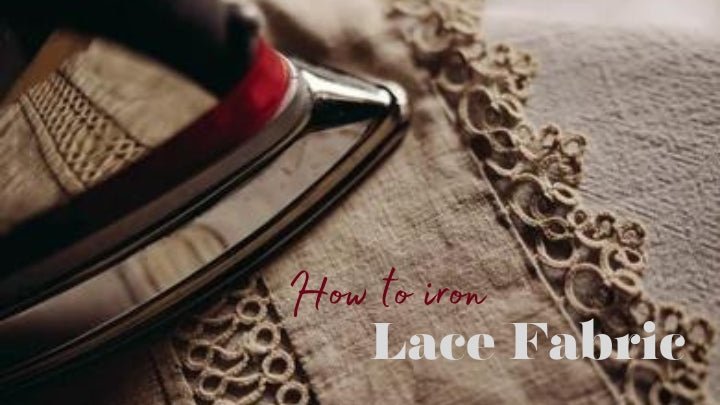Cotton fabric is a popular choice for all types of clothing, particularly during the summer months, due to its breathability and comfort. It is highly favored by beginners as it provides a stable and hassle-free sewing experience. Unlike other fabrics, cotton is easy to work with, making it an ideal choice for a wide range of projects, from simple blouses to stylish sundresses. However, to achieve the best results when sewing with cotton, it's essential to understand the proper cutting and sewing techniques specific to this fabric.
Here we will cover everything you need to know about cutting and sewing cotton fabrics and Does Cotton Fray When Cut.
Is Cotton Fabric Easy to Sew?
Yes, cotton fabric is relatively easy to sew, making it an excellent choice for everyone. Its stability under the sewing machine and lack of excessive stretch make it more straightforward to work with than some other fabrics. Additionally, cotton does not slip while sewing, making it easier to control during the stitching process. Its ability to hold creases well further adds to its convenience during sewing.
What is the Best Tool to Cut Cotton?
When it comes to cutting cotton fabric, having the right tools can make a significant difference in the outcome of your project. Fabric shears or sharp scissors are the best tools for cutting cotton. Choose a pair of high-quality fabric shears with a clean, sharp blade to ensure precise and clean cuts. Avoid using regular scissors, as they may not have the necessary sharpness to cut through the fabric smoothly, leading to uneven edges and potential fraying.
Enhance Your Knowledge: What Is The Difference Between Cotton And Polycotton?.
How Do You Cut Cotton Without Fraying It?
To cut cotton fabric without fraying, follow these simple steps:
Wash and Press
Before cutting your fabric, it's advisable to wash and press it. Pre-washing will remove any sizing or chemicals from the fabric and prevent potential shrinkage after your project is completed. Pressing the fabric will ensure it lies flat and is easy to cut accurately.
Use Fabric Shears
Fabric shears are the best tool for cutting cotton. Position the fabric on a flat, clean surface, and hold it securely to avoid any shifting while cutting. Use long, smooth strokes to cut through the fabric, ensuring an even and clean edge.
Cut Along the Grainline
Cotton fabric has a grainline that runs parallel to the selvage edges. It's crucial to cut along this grainline to maintain the fabric's stability and prevent excessive fraying. Cutting against the grainline can lead to stretching and distortion in the finished garment.
Use Pinking Shears
If you are still concerned about fraying, you can use pinking shears to cut the fabric edges. Pinking shears create a zigzag pattern along the fabric edge, which helps prevent fraying. However, keep in mind that this method is optional, and with proper cutting techniques, fraying should be minimal.
Discover More: What Are The Wash Care Instructions For Poly Cotton Fabric?.
Will Pinking Shears Stop Cotton from Fraying?
Pinking shears can help reduce fraying to some extent, but they may not completely eliminate it. Cotton fabric's inherent stability and structure already make it less prone to fraying, so pinking shears are not always necessary. Using sharp fabric shears and cutting along the grainline will usually be enough to keep fraying at bay. If you do opt for pinking shears, remember that they are best suited for lightweight and medium-weight cotton fabrics.
What Stitch to Use on Cotton Fabric?
The best stitch for sewing cotton fabric depends on the weight of the fabric you are working with. Here are some recommended stitches for different types of cotton:
- Extra Heavy-Weight Cotton: Use a stitch width between 3 and 4, along with a needle size of 120/20 or 100/16.
- Heavy-Weight Cotton: Opt for a stitch width between 2 and 2.5, with a needle size of 90/14 or 100/16.
- Medium-Weight Cotton: Choose a stitch width between 2 and 2.5, with a needle size of 80/12 or 70/10.
- Light-Weight Cotton: Go for a stitch width between 1.5 and 2, with a needle size of 70/10 or 60/80.
Sewing cotton fabrics together requires using a straight stitch, and finishing seams with a zigzag or overlock stitch is recommended to prevent fraying.
What can I Sew with 100% Cotton Fabric?
The versatility of 100% cotton fabric makes it suitable for various sewing projects. Some popular items to sew with cotton fabric include:
- Dresses and Skirts
- Tops and Blouses
- Quilts and Blankets
- Home Decor Items
- Baby Clothes and Accessories
Find Out More About: Why Does Cotton Shrink In The Dryer?.
What Stitch Length for Sewing Cotton?
The stitch length for sewing cotton fabric depends on the weight of the fabric and the type of stitch you are using. For medium-weight cotton, a standard stitch length of 2 to 2.5mm is recommended. For lighter-weight cotton, opt for a shorter stitch length, such as 1.8 to 2.5mm. Adjust the stitch length accordingly to achieve the desired results for your specific project.
What Is the Best Thread for Sewing Cotton?
The best thread for sewing cotton fabric is the cotton thread itself. Cotton thread is a perfect match for cotton fabric and is commonly used for quilting and patchwork projects. Using the same type of thread as the fabric ensures a consistent and cohesive result. Cotton threads have a slight give and are generally weaker than polyester threads, making them ideal for delicate and lightweight projects.
How to Sew Cotton?
Sewing cotton fabric is a simple process that offers satisfying results. Here's a step-by-step guide to sewing cotton:
1. Prepare the Fabric
Start by gathering all the necessary sewing tools, including fabric scissors, pins, measuring tape, sewing machine, and the selected cotton fabric. Pre-wash and iron the fabric to remove any sizing, starch, or dirt and to prevent shrinkage after the project is completed.
2. Cut the Fabric
Lay out your fabric on a flat surface, ensuring it's free from wrinkles and creases. Use fabric scissors to cut along the pattern lines, following the grain of the fabric. Pin the pattern pieces in place, and mark any notches or guidelines with a tailor's chalk or a tracing wheel.
3. Sew the Fabric
Set up your sewing machine with the appropriate needle and thread for cotton fabric. Test the tension and stitch length on a scrap piece of fabric before starting to sew your project. Begin sewing along the pattern lines, using the appropriate seam allowance as indicated in the sewing pattern.
4. Finishing
After sewing the seams, use a serger or a zigzag stitch on the raw edges to prevent fraying. Alternatively, you can sew a double-fold hem or a blind hem for a neat finish on clothing items or home decor projects.
FAQs
Should I wash 100% cotton before sewing?
Yes, it's generally recommended to pre-wash 100% cotton fabric before sewing. Pre-washing helps to remove any sizing, shrinkage, or excess dye from the fabric. Cotton fabrics have the tendency to shrink, and pre-washing ensures that any future shrinkage occurs before the sewing process. Additionally, washing the fabric will soften it, making it more comfortable to wear and work with.
What tension should my sewing machine be on for cotton?
The tension setting for sewing cotton fabric on a sewing machine is typically between 4 and 5. However, the exact tension required may vary depending on the sewing machine model, fabric weight, and thread used.



